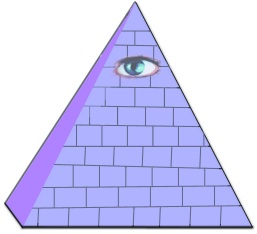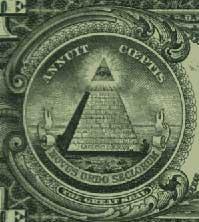
Osirian Legend of Egypt tells a condensed
version of mythology to illustrate the importance of ancient
calendar reckoning. The 1,461-year Sothic Cycle highlights
comparative elements of the Mayan Calendar. The first
and second solar-side time splits by Seth and later, Cainan
form part of the Antediluvian Calendar in Genesis.
Osirian Legend of Egypt
 Ages_of_Adam
ebook
Ages_of_Adam
ebookScreen Articles Christian_Era
Holy_of_Holies ebook Testimony
Mobile Versions
 Antediluvian_First_Calendar
Antediluvian_First_CalendarAncient_Calendars_of_the_Holy_Bible
Ages_of_Adam Articles Menu
 Entry_to_the_Holy_of_Holies
Entry_to_the_Holy_of_HoliesHoH_Secondary_800-Year_Age_of_Adam
364-Day_Calendar_Year
Converting the Primary 130-Tun-Year
Age of Adam to 180-Tzolken-Sacred-Years
Primary_90-Sacred-Year_Age_of_Enos
Secondary_815-Year_Age_of_Enos
Primary_105-Year_Seth_104-Year_Venus_Rounds
Mayan_&_Egyptian_Primary_70-Sacred-Year_Age_of_Cainan
Jewish_Primary_70-Sacred-Year_Age_of_Cainan
Secondary_840-Year_Age_of_Cainan
Osirian_Legend_of_Egypt.htm
Primary_65-Year_Age_of_Mahalaleel
Secondary_830-Year_Age_of_Mahalaleel
Primary_162-Year_Age_of_Jared
Secondary_800-Year_Generation_Cycle_of_Jared
Primary_65-Year_Age_of_Enoch
Videos
YouTube Channel
Get Understand_Genesis_5_Ages_5 Video & Script tells a tale of two Seths: the Jewish version from the Holy Bible and the Egyptian version that stems from mythology. Jewish Seth refers to the Adam's third born son as written in early Genesis. Cain was the eldest son who lost his first born birthright. Fifth video in the series.
Similar Articles
 Osirian_Legend_of_Egypt tells a
condensed version of mythology to illustrate the importance of
ancient calendar reckoning. The 1,461-year Sothic Cycle
highlights comparative elements of the Mayan Calendar. The
first and second solar-side time splits by Seth and later,
Cainan form part of the Antediluvian Calendar in Genesis.
Osirian_Legend_of_Egypt tells a
condensed version of mythology to illustrate the importance of
ancient calendar reckoning. The 1,461-year Sothic Cycle
highlights comparative elements of the Mayan Calendar. The
first and second solar-side time splits by Seth and later,
Cainan form part of the Antediluvian Calendar in Genesis.
OLE 151
kb Get the
article PDF Download Only 99 cents and you help
support timeemits.
151
kb Get the
article PDF Download Only 99 cents and you help
support timeemits.
PDF Downloads
 Get_More_Time
Get_More_Time
Social Media
Contact
Ministry Affiliates
The Osirian legend of Egypt sets aside 70-nights
during a 365 day-solar-year to mark the star Sirius’
disappearance below the horizon. Osirus existed in the
netherworld for 70-days until his triumphant resurrection
every year. Egyptian mythology preserved the annual heliacal
rising that coincided with the flood of the Nile. Expanding
the folklore accord of the ancient Egyptians, Sirius remains
invisible for 70-years out of a 365 year-solar-cycle that uses
365 day-solar-years or a "year of years." Similar to the
Cainan Primary 70-Tzolken-sacred-year Age, this
situation employs a 70-days & years single term
during the 365 Days & Years single term of the Egyptian
Calendar. Sustaining ideas of dividing daylight from
darkness, and lunar from solar separation times in equal, but
opposite portions underlines a theology that entails the
annual duration of invisibility for the "Dog Star," Sirius.
Identical patterns repeat when dual 400-day and 400-year
Baktun Cycle terms are considered. A Baktun 400 Day
& Year single term results.

YouTube Channel

Get Understand_Genesis_5_Ages_5 Video & Script tells a tale of two Seths: the Jewish version from the Holy Bible and the Egyptian version that stems from mythology. Jewish Seth refers to the Adam's third born son as written in early Genesis. Cain was the eldest son who lost his first born birthright. Fifth video in the series.
Gn5A5VT  includes Video 5
download .mp4, 32 mb and transcript PDF download
567 kb eStore
for Only $ 1.98
includes Video 5
download .mp4, 32 mb and transcript PDF download
567 kb eStore
for Only $ 1.98
Similar Articles
 Osirian_Legend_of_Egypt tells a
condensed version of mythology to illustrate the importance of
ancient calendar reckoning. The 1,461-year Sothic Cycle
highlights comparative elements of the Mayan Calendar. The
first and second solar-side time splits by Seth and later,
Cainan form part of the Antediluvian Calendar in Genesis.
Osirian_Legend_of_Egypt tells a
condensed version of mythology to illustrate the importance of
ancient calendar reckoning. The 1,461-year Sothic Cycle
highlights comparative elements of the Mayan Calendar. The
first and second solar-side time splits by Seth and later,
Cainan form part of the Antediluvian Calendar in Genesis.OLE
 151
kb Get the
article PDF Download Only 99 cents and you help
support timeemits.
151
kb Get the
article PDF Download Only 99 cents and you help
support timeemits.PDF Downloads
 Get_More_Time
Get_More_TimeSocial Media
Contact
Ministry Affiliates
Osirian Legend of Egypt

Abstract traces in ancient oral mythology supplement the anthropology of past culture. Clever screening of stories retold and rewritten many times over avail historians to discern the more important pieces that still survive. Architecture and other physical relics discovered are elements of the bygone days, and when substantiated with customs and folklore, secure a clearer understanding of former society. In libraries and museums, appreciation for the shoulders forgotten preserves their heritage, and confidently, the future will conserve those days and things shared today. Egyptian mythology and religion were insistent upon the calendar mathematics of the empire.
Osiris and his wife or sister, Isis ruled over the pre-historical lands of Egypt. Both divinities joined Earth to assist the development of humanity. Osiris had a son/brother named Seth or Set. The brothers dwelt at the ancient city of Abydos, together with their wives, Isis and Nephthys. People adored Osiris for supporting the needs of civilization, good health and welfare. Osiris and Isis had to return home during their visit to Asia. Seth and seventy-two others plotted against Osiris during his absence. The conspiracy group arranged a homecoming festival. We are told by the myth a strange box was introduced.
One by one, all the guests tried to fit into the box. Osiris was last and the only participant able to ease himself into the box. The conspirators suddenly shut and sealed the lid on the box. They cast the tomb into the Nile River or sea, and it floated northward. Eventually the box rested in a tamarisk tree. Isis and her nephew Anubis set out to find her husband's body. They found the tree at Byblus. However, Seth’s magical power guarded the tree and she could not approach the coffin.
About this time, the King of Byblus came looking for a tree to serve as a column for his palace. Isis assumed the form of a dove and watched. The King selected the same tree that held Osiris. Isis in vain attempted to deter the men from cutting the tree down. Isis resumed her womanly role undaunted and followed the King back to the palace where she became nurse for the queen's child.
Isis finally recovered the coffin only to again confront Seth's magical practices. Seth stole the box away from her and cut the body of Osiris into fourteen pieces. Seth scattered the pieces, forcing Isis to look again for Osiris. Isis searched everywhere until she had located every piece except the phallus. She then made a wooden figurine to represent the phallus and transported the body back to Abydos for burial. Isis wept and chanted prayers for her dead mate. Her tears and prayers were so powerful that one part of Osiris revived enough to obtain conception for his wife. Osiris then ascended to heaven and observed Isis while she carried and bore his only son, Horus. Some texts claim Horus was a reincarnation of his father. Other versions say that Isis and Osiris conceived Horus while they were unborn in their mother's womb. Seth knew that Horus would grow up to avenge his father. Horus grew to maturity and after a great contest, returned the throne to Isis. She refused the throne and opted to return to heaven. She rejoined herself to the spirit of her dead husband. She abdicated and Horus succeeded the throne to everyone’s satisfaction.

An all seeing third eye is on the
dollar bill.
Below the symbol are the words:
"Novus Ordo Seclorum," which can be translated
as "A New Order of the Ages."
Seth or Set personifies to be the Egyptian devil and the
spiritual emblem of adversity. Seth portrays an evil
disguise as the serpent Typhon. Seth stands for
the destructive antiray that opposes the powers of
light. Seth (Typhon) is the archetype of the sun god,
Ra. The thinking behind dualities of light versus darkness is
noticeable for Seth in this fragment of Egyptian
mythology.Below the symbol are the words:
"Novus Ordo Seclorum," which can be translated
as "A New Order of the Ages."
Seth Jewish Primary 105-Ethiopic-year Venus Round 3 Age (S 105-Y VR 3) links with Seth Mayan & Egyptian Primary 104-solar-year Venus Round 3 Age (S 104-Y VR 3) and forms the first solar-side time split allocated to Seth 400-year Baktun Cycle 3. Twice Seth Jewish Primary Solar 105-Ethiopic-year Venus Round 3 Age accrues 210-Ethiopic-years of solar-side time split for 800-year Generation Cycle 2. Cainan Primary 70-Tzolken-sacred-year Age numerically matches directly with 70-years disappearance time of Sirius. Shades of the biblical Seth weave into Egyptian mythology.
Seth represents a polarization of common spiritual influences associated with calendars. After Cain slew Abel, Seth replaces his first-born brother (Genesis 4:8, 4:25). Interesting are the wooden column references at Byblus and Isis performing roles of a dove and the queen's nurse. The Ark of Noah and the "ark of the bulrushes" (papyrus) that the infant Moses was discovered in share traits with this legend (Exodus 2:3). Seth cutting Osiris into fourteen pieces is a lunar reference that marks the half month. Note the seventy-third (73rd) and final attempt to fit the box by Osiris, after seventy-two others, reveals a deified King setting aside the last 73rd-Tzolken-sacred-year of a 52-year Calendar Round.
The 365 Day & Year single term quadruples to reach the Egyptian 1,461-year Sothic Cycle. In contrast, numerical matching found with using four 364 Day & Year single terms amounts 1456-years. An additional 5 Day & Year single term, accounting for the Leap Day fraction, finishes the 1,461-year Sothic Cycle. A 1,460-year Sothic Cycle differs from 1600-l/s-years, or four 400-year Baktun Cycles by 140-years. The Egyptian lunar/solar calendar version divides the remaining 140-years into 70-years of lunar-side and 70-years of solar-side time split. Cainan’s given Primary 70-Tzolken-sacred-year Age personifies 70-years Osirian time spent in the underworld by virtue of numerical matching and solar-side time split.
The Genesis sequence of chronology was a component of Egyptian mythology. The solar-side 70-year half of 140-years is at the heart of Osirian lore and the innermost sanctum of the temple. Calculating 69.2-Tzolken-sacred-years or 70.2-Tzolken-sacred-years approximates equal to Cainan Primary 70 Tzolken-sacred-year Age. Seth and Cainan together provide lunar/solar calculations that are fundamental to the 1,461-year Sothic Cycle. Secondary Ages are based upon 800-year Generation Cycles. Days & years share numerical matching themes throughout six recorded lunar/solar divisions from Adam to Jared. The ancient calendar of Osiris embeds in Egyptian mythology and Judeo-Christian biblical records thousands of years prior to the great flood of Noah.
Are you a pastor, educator or a student of the Holy Bible? Timeemits.com seeks anointed people to review and contribute to the Ages_of_Adam ministry. Ancient lunar/solar calendars like the Jewish and Mayan calendars provide the background to understanding early time. Ancient calendars of the Holy Bible use differences between the moon and sun, numerical matching and a 364-day calendar year to describe X-number of days that match with X-number of years. Ages_of_Adam is a free read at timeemits.
tags Osirus, Osirian, legend, mythology, Egyptian, Mayan, Isis, Horus, Seth, Tzolken, Genesis, Byblus
Clark Nelson is webmaster for http://timeemits.com/Get_More_Time.htm, author of Ages_of_Adam and sequel, Holy_of_Holies.
Revised Copyright 2015 Clark Nelson and timeemits.com All Rights Reserved. Screen URL Mobile URL